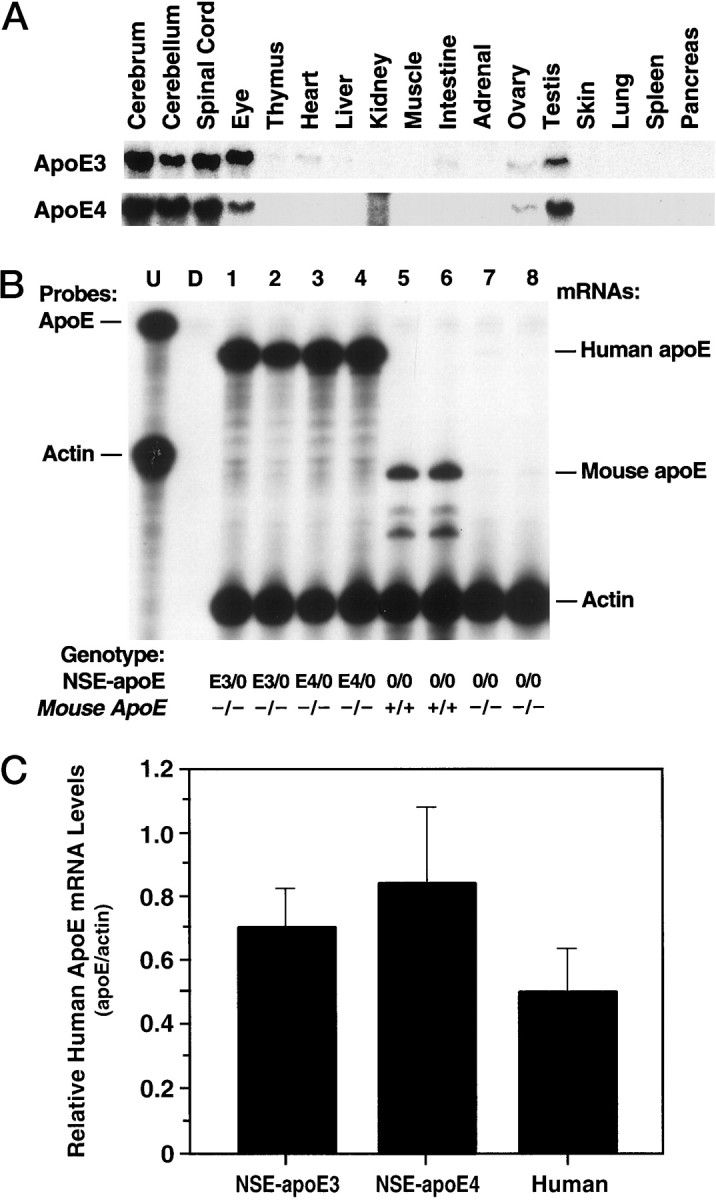Fig. 2.

Expression of NSE-apoE transgenes at the RNA level. Total RNA was extracted from different tissues, and steady-state apoE mRNA levels were determined by RPA with an apoE antisense riboprobe that allows differentiation of human from mouse apoE transcripts. A, Representative autoradiograph revealing similar expression patterns of human apoE mRNA across different organs and CNS regions in NSE-apoE3 (top panel) and NSE-apoE4 (bottom panel) mice. Note the predominant expression in CNS, eyes, and gonads. The signal in the kidney lane in the bottom panel is an artifact caused by incomplete RNase digestion of the sample. B, Comparison of cerebral apoE mRNA levels in NSE-apoE mice and controls (n = 2/group). RNA was extracted from entire hemibrains of 7- to 9-month-old NSE-apoE3 (lanes 1, 2), NSE-apoE4 (lanes 3, 4), wild-type (lanes 5, 6), and Apoe−/−(lanes 7, 8) mice and analyzed by RPA. Theleftmost lane shows signals of undigested (U) radiolabeled probes; the other lanes contained the same riboprobes plus either tRNA (D; no specific hybridization) or brain RNA samples, digested with RNases. As outlined in Materials and Methods, the apoE riboprobe protects a larger fragment of human apoE mRNA and a smaller fragment of mouse apoE mRNA (protected mRNAs are indicated on theright). Note the similar levels of human apoE mRNA expression in brains of NSE-apoE3 and NSE-apoE4 mice. Comparable results were obtained in additional cohorts of 7- to 9-month-old mice (n = 9) and in corresponding groups of 3- to 4-month-old mice (n = 6) (data not shown).C, Semiquantitative comparison of human apoE mRNA levels in brain tissues of NSE-apoE mice and humans. Signals from RPAs on total RNA extracted from entire hemibrains of NSE-apoE3 (n = 4) or NSE-apoE4 mice (n = 6) or from the midfrontal gyrus of humans without dementia (n = 9) were quantitated by phosphorimager analysis essentially as described (Rockenstein et al., 1995). No statistically significant differences were identified when the three groups were compared by ANOVA or when the two groups of transgenic mice were compared by unpaired, two-tailed Student’s ttest.
